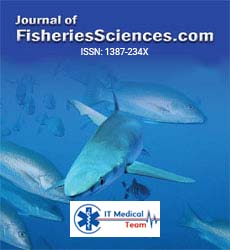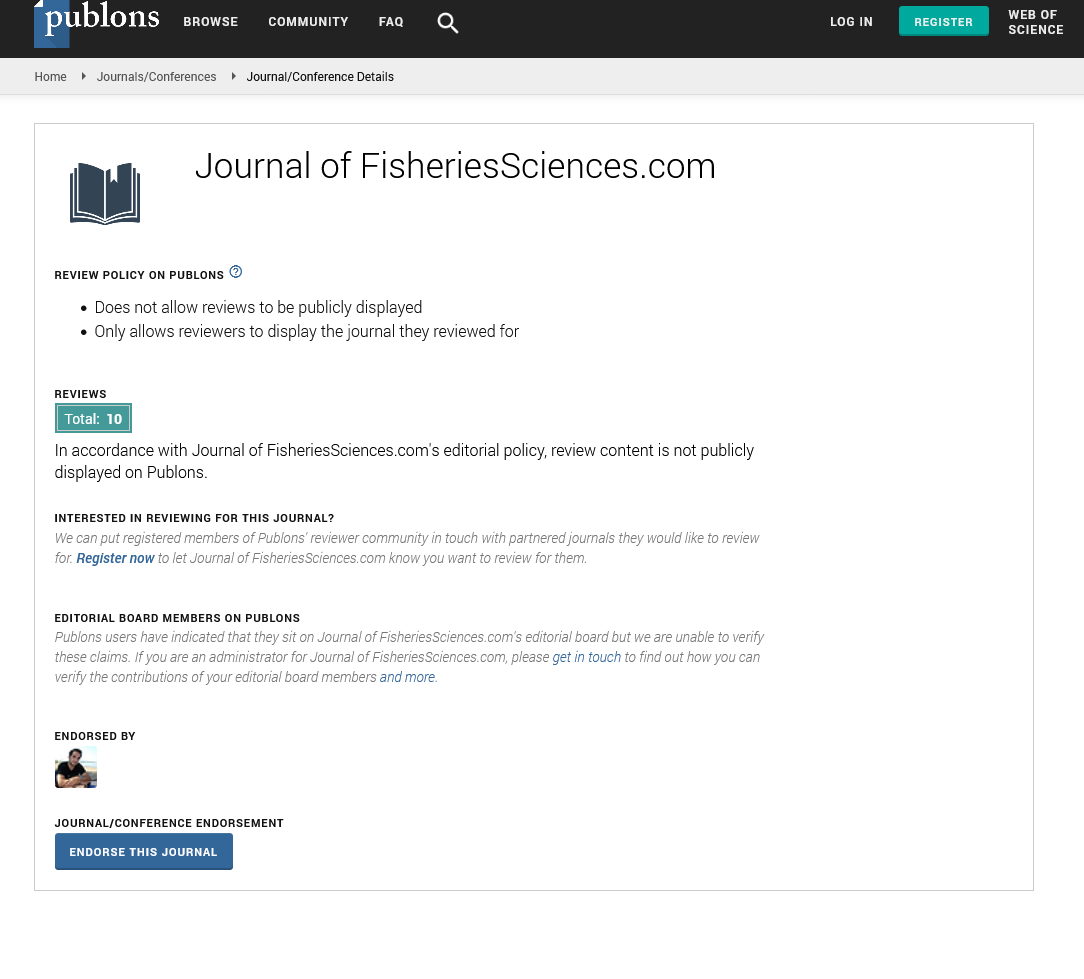Perspective - (2024) Volume 18, Issue 6
Aquaculture: The Future of Sustainable Seafood Production
Maryse Arendt*
Department of Biology and Ecology of Fishes, University of AquaMed, Salta, Argentina
*Correspondence:
Maryse Arendt, Department of Biology and Ecology of Fishes, University of AquaMed, Salta,
Argentina,
Email:
Received: 03-Dec-2024, Manuscript No. IPFS-24-15411;
Editor assigned: 06-Dec-2024, Pre QC No. IPFS-24-15411 (PQ);
Reviewed: 20-Dec-2024, QC No. IPFS-24-15411;
Revised: 23-Dec-2024, Manuscript No. IPFS-24-15411 (R);
Published:
31-Dec-2024
Introduction
Aquaculture, the cultivation of aquatic organisms such as fish,
shellfish and seaweed, has emerged as a vital component in
meeting global seafood demand. As wild fish populations face
increasing pressures from overfishing, habitat destruction and
climate change, aquaculture offers a sustainable alternative that
can help safeguard marine ecosystems and ensure food security.
Description
Understanding aquaculture
Aquaculture involves farming aquatic species in controlled
environments, which can range from freshwater ponds and
reservoirs to marine cages and recirculating systems. This
practice has grown significantly over the past few decades,
evolving from small-scale, artisanal operations to large,
industrial-scale enterprises. The primary goal of aquaculture is to
produce seafood efficiently and sustainably while minimizing the
impact on natural resources.
Types of aquaculture systems
Aquaculture systems vary widely depending on the species
being farmed, the environmental conditions and the scale of
production. The main types include:
Pond culture: This traditional method involves raising ish in
arti icial ponds or tanks. Pond culture is commonly used for
freshwater species like tilapia, cat ish and trout. The ponds can
be extensively or intensively managed, with varying levels of
control over water quality and feeding.
Recirculating Aquaculture Systems (RAS): RAS are advanced
systems that recycle water within the facility, minimizing the
need for new water sources and reducing waste discharge. This
technology is suitable for both freshwater and marine species
and offers precise control over environmental conditions,
leading to higher growth rates and better health.
Marine cages: Marine cage aquaculture involves farming fish
in large, floating cages placed in open seawater. This method is
commonly used for species like salmon, sea bass and tuna. While
it allows for large-scale production, it requires careful
management to prevent escapes, disease outbreaks and
environmental impact.
Shellfish farming: Shellfish, including oysters, mussels and
clams, are farmed using techniques such as bottom planting or
suspended culture. Shellfish farming has minimal environmental
impact and can help improve water quality by filtering plankton
and organic matter.
Marine conservation and environmental challenges
Marine conservation is a pressing issue as human activities
increasingly impact ocean health. Overfishing, pollution, climate
change and habitat destruction are significant threats to marine
ecosystems. Overfishing depletes fish populations and disrupts
food chains, while pollution from plastics and chemicals can
harm marine life and degrade habitats. Climate change leads to
ocean warming, acidification and sea-level rise, further
exacerbating these problems.
Efforts to address these challenges include the establishment
of Marine Protected Areas (MPAs), which are designated regions
where human activities are regulated to conserve marine life and
habitats. MPAs help to restore and protect marine ecosystems,
allowing them to recover from the effects of overfishing and
pollution. Additionally, international agreements and policies
aim to reduce marine pollution, limit fishing quotas and promote
sustainable practices.
The importance of marine research
Marine research plays a vital role in advancing our
understanding of the ocean and its inhabitants. By studying
marine species and ecosystems, scientists can track changes in
biodiversity, monitor the health of marine environments and
develop strategies to mitigate the impacts of human activities.
Research also contributes to the discovery of new resources and
technologies. For example, marine organisms have inspired the
development of new pharmaceuticals, materials and
biotechnological applications.
One notable example is the use of marine-derived compounds
in medicine. For instance, compounds from marine sponges
have been found to have anticancer properties and substances
from seaweeds are being explored for their potential in treating
various health conditions. These discoveries highlight the value
of marine biodiversity not only for ecological balance but also
for human health and well-being.
Exploring the deep sea
The deep sea, defined as the part of the ocean below 200
meters, is one of the least explored and most mysterious regions
of our planet. It is home to unique and often bizarre life forms
adapted to extreme conditions such as high pressure, low
temperatures and complete darkness. Research in this area is
conducted using specialized equipment such as Remotely
Operated Vehicles (ROVs) and manned submersibles.
Deep-sea exploration has led to the discovery of remarkable
species, such as the giant squid and the bioluminescent
anglerfish. These creatures possess adaptations that allow them
to thrive in the harsh deep-sea environment. For example, the anglerfish uses a bioluminescent lure to attract prey, while the
giant squid has large eyes adapted to see in the dark.
Conclusion
Marine biology is a dynamic and essential ield that uncovers
the wonders of the ocean and its diverse inhabitants. Through
research and conservation efforts, we can better understand
and protect the intricate balance of marine ecosystems. By
involving the public in scienti ic research and conservation
efforts, we can build a collective effort to protect marine
ecosystems and ensure their sustainability for future
generations.
Citation: Arendt M (2024) Aquaculture: The Future of Sustainable Seafood Production. J Fish Sci. Vol.18 No.6






